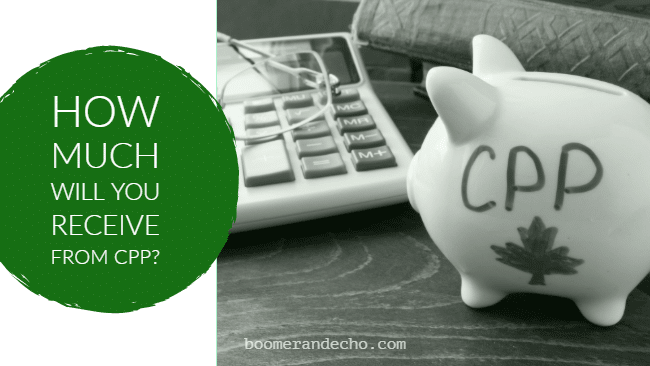CPP Payments: How Much Will You Receive From Canada Pension Plan


Canada Pension Plan (CPP) benefits can make up a key portion of your income in retirement. Individuals receiving the maximum CPP payments at age 65 can expect to collect $16,375.20 per year ($1,364.60 per month) in benefits.
The amount of your CPP payments depends on two factors: how much you contributed, and how long you made contributions between ages 18 and 65. Most don’t receive the maximum benefit. In fact, the average amount for new CPP beneficiaries is just $9,983.04 per year (as of January 2024).
The table below shows the monthly maximum CPP payment amounts for 2024, along with the average amount for new beneficiaries:
| Type of pension or benefit | Average amount for new CPP beneficiaries (Jan 2024) | Maximum payment amount (2024) | ||
|---|---|---|---|---|
| Retirement pension (at age 65) | $831.92 | $1,364.60 | ||
| Disability benefit | $1,176.98 | $1,606.78 | ||
| Survivor’s pension – younger than 65 | $524.68 | $739.31 | ||
| Survivor’s pension – 65 and older | $326.87 | $818.76 | ||
| Death benefit (one-time payment) | $2,500 | $2,500 | ||
| Combined benefits | ||||
| Combined survivor’s and retirement pension (at age 65) | $999.54 | $1,375.41 | ||
| Combined survivor’s pension and disability benefit | $1,286.98 | $1,613.54 |
Now, you may not have a hot clue how much CPP you will receive in retirement, and that’s okay.
The good news is that the government does this calculation for you on an ongoing basis. This means that you can find out how much money the government would give you today, if you were already eligible to receive CPP. This information is available on your Canada Pension Plan Statement of Contribution. You can get your Statement of Contribution by logging into your My Service Canada Account, which – if you bank online with any of the major banks – is immediate.
Related: CRA My Account – How to check your tax information online
If you’d prefer to send your personal information by mail you can request a paper copy of your Statement of Contribution sent to you by calling 1.877.454.4051, or by printing out an Application for a Statement of Contributions from the Service Canada Website.
Note that the information available to you on your CPP Statement of Contribution may not reflect your actual CPP payments. That’s because it doesn’t factor in several variables that might affect the amount you’re entitled to receive (such as the child-rearing drop-out provision). The statement also assumes that you’re 65 today, which means that later years of higher or lower income that will affect the average lifetime earnings upon which your pension is based aren’t taken into consideration.
CPP is Indexed to Inflation
Canada Pension Plan (CPP) rate increases are calculated once a year using the Consumer Price Index (CPI) All-Items Index. The increases come into effect each January, and are legislated so that benefits keep up with the cost of living. The rate increase is the percentage change from one 12-month period to the previous 12-month period.
CPP payments were increased by 4.8% in January 2024, based on the average CPI from November 2022 to October 2023, divided by the average CPI from November 2021 to October 2022.
Note that if cost of living decreased over the 12-month period, the CPP payment amounts would not decrease, they’d stay at the same level as the previous year.
CPP Payment Dates
CPP payment dates are scheduled on a recurring basis a few days before the end of the month. This includes the CPP retirement pension and disability, children’s and survivor benefits. If you have signed up for direct deposit, payments will be automatically deposited in your bank account on these dates:
All CPP payment dates 2024
- January 29, 2024
- February 27, 2024
- March 26, 2024
- April 26, 2024
- May 29, 2024
- June 26, 2024
- July 29, 2024
- August 28, 2024
- September 25, 2024
- October 29, 2024
- November 27, 2024
- December 20, 2024
Why Don’t I Receive The CPP Maximum?
Only 6% of CPP recipients receive the maximum payment amount, according to Employment and Social Development Canada. The average recipient receives about 56% of the CPP maximum. With that in mind, it’s best to lower your CPP expectations when calculating your potential retirement income.
Why don’t more people receive the maximum? Well, because it requires 39 years of CPP contributions at the maximum level to get the biggest possible benefit in retirement. That means you need a salary that meets or exceeds the yearly maximum annual pensionable earnings threshold, which in 2024 is $68,500.
Note that for the first time in 2024 there is a new Year’s Additional Maximum Pensionable Earnings (YAMPE) as part of the enhanced CPP that is being phased in over two years. This means Canadians will pay an additional 4% on the earnings between $68,500 to $73,200.
- Year YMPE
- 2024 $68,500
- 2023 $66,600
- 2022 $64,900
- 2021 $61,600
- 2020 $58,700
- 2019 $57,400
- 2018 $55,900
- 2017 $55,300
- 2016 $54,900
- 2015 $53,600
- 2014 $52,500
- 2013 $51,100
Plenty of variables affect your ability to earn the maximum CPP benefits. Maybe you joined the work force late, dropped out for a period of time, or retired early.
Related: When Should Early Retirees Take CPP?
Low income earners may not hit the YMPE level often enough to get the highest possible CPP retirement benefit. Business owners who choose to pay themselves dividends don’t need to contribute to CPP, but that means they won’t be eligible to receive benefits either.
When To Take CPP?
Perhaps the most common question about CPP is when to take it. The standard age to take CPP is at age 65. But, Service Canada may proactively send out a notice a few months before your 60th birthday advising you that you’re eligible to apply for CPP and giving you an estimate of your expected CPP payments.
You can take a reduced CPP payment starting as early as age 60. If you do elect to take CPP early, you’ll receive 0.6% less for every month you receive it before age 65. That means, for those taking CPP at age 60, a reduction in their CPP payments by 36%. Reductions aside, there could be good reasons to take CPP early – namely if you need the income sooner than 65, or if you expect to have a reduced life expectancy.
Conversely, you can enhance your CPP payments by deferring your pension up until age 70. The advantage of waiting is you’ll receive a 0.7% increase for every month you defer CPP past age 65. Taking CPP at age 70 results in a 42% enhancement to your pension. The biggest reason to defer CPP is to protect against longevity risk – the risk of outliving your money. The trade-off is using your own personal savings to tide you over until the enhanced CPP payments kick-in later in life.
Note there is no benefit to defer CPP beyond age 70, so get your CPP application in on time to avoid delays.
Final Summary
CPP is a complicated system but one that is crucial to retirement planning for many Canadians. It’s important to understand how much CPP you will receive in retirement, and to know how difficult it is to receive the maximum CPP payments. Most CPP beneficiaries receive much less than the maximum, with the average between 55% and 60% – so that’s good to know going into your retirement income planning.
You can find out an estimate of your CPP benefits by looking at your Statement of Contribution online at your My Service Canada Account, or request a paper copy by calling Service Canada.
CPP payments are indexed to inflation, with the latest increase going up by 4.8% in 2024. CPP payment dates are scheduled toward the end of every month and automatically deposited into your bank.
Finally, a big consideration is when to take CPP and how the payments fit into your retirement plan. Do you expect to live a long life? Will you work until age 65? Do you have sufficient personal savings to last until your CPP payments kick-in? Will you take CPP at age 65, or elect to take your pension earlier or later?
Readers: How does CPP fit into your retirement income plan?





